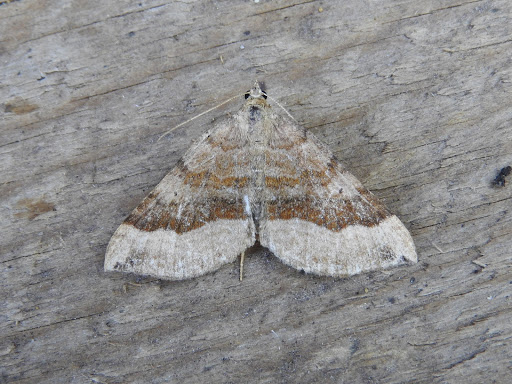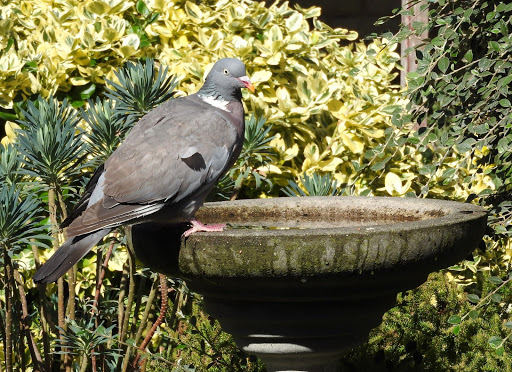Lade - hot, dry and sunny, ne 3 - Another muggy night, but at least here on the coast we had a pleasant east wind off the sea to temper the heat - and the day started in some style with a crash, bang, wallop of thunder and lightening followed by a twenty minute cloudburst of torrential rain at 5am. Once it had stopped I worked my way through a packed moth trap of 41 macro species including 55 Shuttle-shaped Darts, our first Large Yellow Underwing of summer (what`s happened to them this year?) Canary-shouldered Thorn, five Jersey Tigers, 5 Tree-lichen Beauties, Gold Spot and, new for the trap, a migrant Golden Twin-spot.
Canary-shouldered Thorn and Golden Twin-spot
Moving onto the local patch and the bomb hole scrub by the cattery was, for a change, full of activity with a loose flock of 10 Stonechats, 10 Whitethroats, five Willow Warblers and a Redstart, which is a rare bird here with less than 10 records in my time. On south lake a moulting adult Little Gull was present for about ten minutes, while Common and Sandwich Terns, Whimbrel and several Sand Martins passed overhead.
I haven`t visited Scotney outback since lock down began, so I was well overdue a visit and despite the heat there was plenty to see. The front lakes attracted over 1,000 feral geese and eclipse ducks, gulls and Cormorants with a White-fronted Goose the only unusual bird. The farmyard was busy what with the harvest in full swing and devoid of birds, but the track round to the dung heap delivered 20 Yellow Wagtails, 10 Corn Buntings, five Wheatears, two Stonechats, 10 Skylarks, five Meadow Pipits, two Reed Buntings and a Peregrine perched atop a pylon. On the pits five each of Common Sandpiper, Little Ringed Plover and Curlew, plus two Avocets, Redshanks, Lapwings and a Green Sandpiper. Probably the weirdest sight of all, considering the nearest tree is a mile away, was a Grey Squirrel following the main fence line and looking very exposed as it paused every so often atop a post!
Yellow Wagtail, Wheatear and Grey Heron, Scotney
Grey Squirrel - looking very confused on the treeless wastes of Scotney farm!
Next stop was Galloways where a Clouded Yellow nipped over the track, plus two Whinchats and a Wheatear by the bend. On the bird reserve I had a brief look for the reported Pied Fly by the bee-hive sallows, without success, before finishing off on Burrowes where it was good to see 26 fledged Common Terns on the shingle islands, plus a juv Black Tern from the lookout by Dennis`s hide.











































